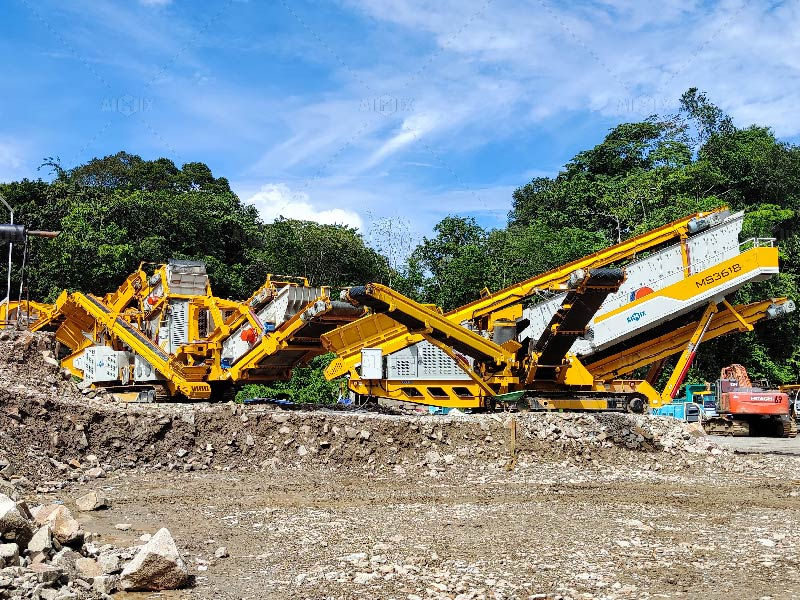Stability of a Stationary Crushing Plant
- info515452
- 4月18日
- 讀畢需時 3 分鐘
In the mining and aggregate industry, the long-term success of a stone crusher plant hinges on its structural and operational stability. A stationary crushing plant is designed to handle large volumes of material continuously over time, often working under extreme environmental conditions. Ensuring its stability is not only essential for safety but also for maintaining high productivity and minimizing operational downtime.
Stability doesn't only refer to physical foundations but also includes mechanical reliability, consistent material output, and adaptability to different types of stone like granite, basalt, or limestone. Let’s take a closer look at the factors that influence the stability of a stationary crushing plant and how plant operators can ensure efficient, long-term operations.
Importance of Stability in Stationary Crushing Operations
A stationary stone crusher plant(planta trituradora de piedra) is a fixed installation, which means it lacks the mobility of a crawler-type or mobile system. Once installed, its performance and longevity are closely tied to the quality of its design, the durability of its components, and the consistency of its foundation. Any imbalance or instability can cause excessive wear, frequent breakdowns, or even safety risks for workers.
Whether the plant is used as a limestone crusher or to process other hard rock materials, its stable setup guarantees smoother material flow and more efficient crushing performance.

Key Factors Affecting Plant Stability
1. Foundation Design and Civil Works
A stable crushing plant begins with a solid foundation. The base must be engineered to bear the dynamic load of crushers, screens, and conveyors while resisting vibrations generated during operation.
Heavy-duty machines such as a cone crusher(molino de cono) or jaw crusher require isolated, vibration-resistant platforms. If improperly constructed, foundations can crack, shift, or sink over time—compromising the plant’s structure and leading to misalignment or mechanical damage.
2. Equipment Configuration and Load Balance
The stability of the crushing system depends heavily on the logical layout and balance of equipment. If the stone crusher plant includes multiple stages—primary crushing, secondary crushing (such as a cone crusher), and screening—the transition between each must be seamless.
Overloading any stage of the process can lead to blockages or uneven wear, causing the system to operate inefficiently. A well-balanced plant ensures all components function within their designed capacity, improving performance and extending equipment life.
3. Material Flow and Feed Control
Stability also includes operational flow. A consistent and regulated feed ensures that crushers work efficiently without surges that could strain the system. This is particularly important when using a limestone crusher, as softer materials may compact or block chutes if not properly fed.
Advanced feeders, such as vibrating grizzly feeders, help distribute material evenly and reduce sudden loads that destabilize the process.
Role of Crushing Equipment in Stability
1. Jaw Crusher and Primary Stability
The jaw crusher is usually the first step in a crushing line and bears the brunt of breaking down large stones. It must be securely fixed to the ground and designed to absorb high impact without transmitting too much vibration to surrounding structures.
2. Cone Crusher for Secondary and Tertiary Stability
A cone crusher brings consistency and shape control to the production line. Its steady crushing action and adjustable settings make it an ideal choice for maintaining quality and throughput in a stable crushing plant.
Since cone crushers are sensitive to feed size and load variation, using them in a controlled environment (like a stationary setup) enhances both their performance and reliability.
3. Specialized Crushers for Material Types
Using the right equipment for the material type greatly affects plant stability. For example, a limestone crusher(trituradora de caliza) should be optimized for softer rock, using components that prevent clogging and excessive dust. On the other hand, harder materials require reinforced crushers that can handle impact and abrasion.
Matching the crusher type to the stone type minimizes unnecessary stress on the system and boosts stability.
Maintenance and Monitoring
Long-term stability is ensured through routine inspection and preventive maintenance. Regular checks on structural supports, machine alignment, lubrication levels, and wear parts keep the system operating smoothly.
Digital monitoring systems can also be installed to track vibration, load, and temperature—alerting operators to any instability before it causes a failure.
Conclusion
The stability of a stationary stone crusher plant is foundational to its efficiency and safety. From solid civil works and properly configured cone crushers to reliable limestone crusher setups and regular maintenance, every element contributes to a stable and productive operation.
In a demanding industry where downtime means lost revenue, investing in structural and operational stability is not optional—it’s essential. Whether setting up a new plant or optimizing an existing one, focusing on these principles ensures smoother operations and a higher return on investment.






留言